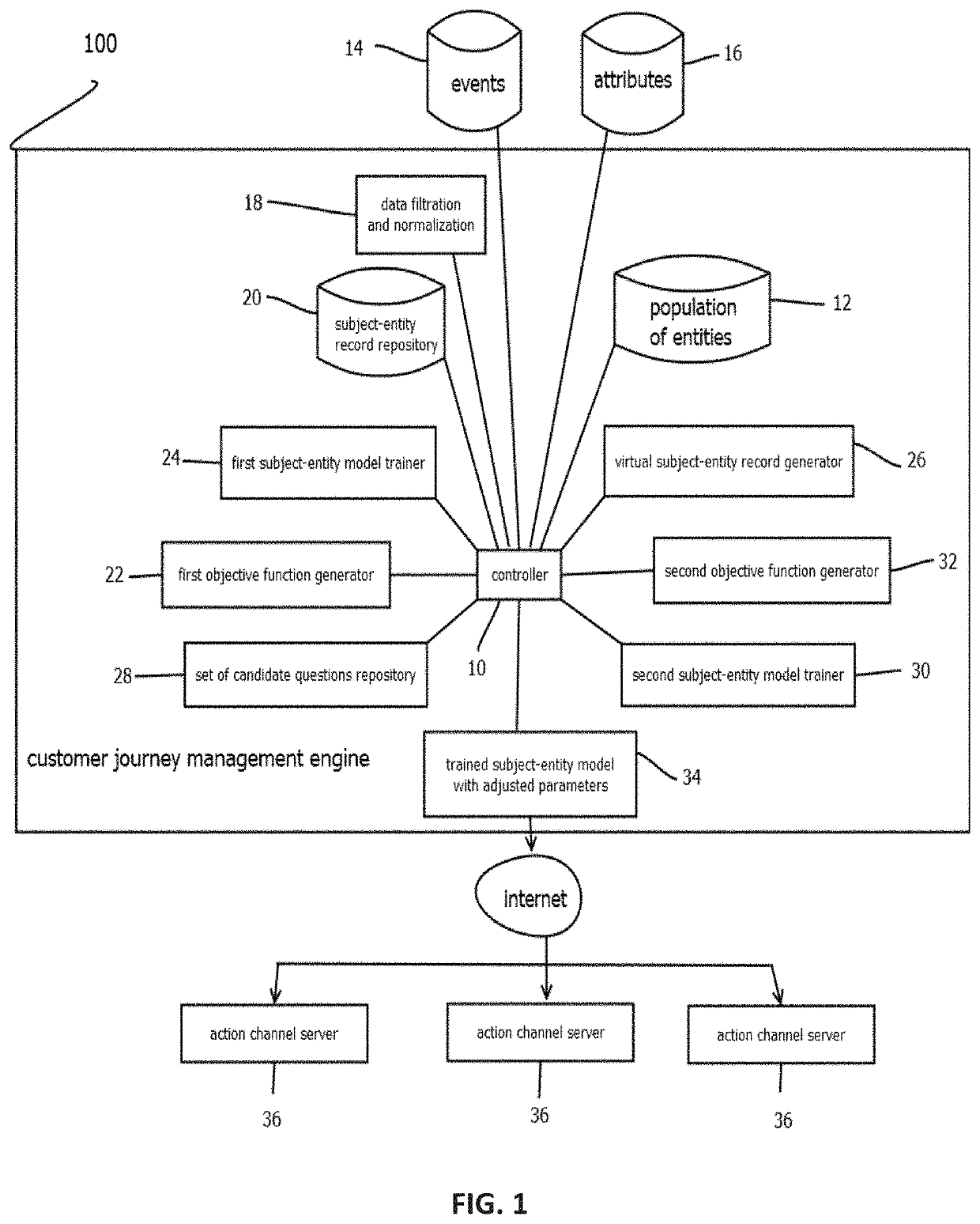Customer journey management engine
a customer journey and engine technology, applied in the field of machine learning, can solve the problems of not being able to test the system response to every possible possible, large space of possible queries, and high relative cost of queries, so as to reduce the customer journey knowledge deficit (cjkd) and reduce the cjkd
- Summary
- Abstract
- Description
- Claims
- Application Information
AI Technical Summary
Benefits of technology
Problems solved by technology
Method used
Image
Examples
embodiment 1
2. The medium of embodiment 1, wherein: at least some of subject-entity records of the plurality of subject-entity records have interacted within a time range with the actor entity.
embodiment 2
3. The medium of embodiment 2, wherein the time range is a trailing time range.
4. The medium of embodiment 1, wherein: the first machine-learning model is configured to predict responses of the plurality of subject-entity records given previous time-series of events and attributes of the plurality of subject-entity records.
5. The medium of embodiment 1, wherein the operation comprise: iterating training of a plurality of models to increase the accuracy of the model across each iteration responsive to next questions and responses.
6. The medium of embodiment 1, wherein: the first machine learning model comprises a Hidden Markov model.
7. The medium of embodiment 1, wherein: the first machine learning model comprises a long short-term memory model.
8. The medium of embodiment 1, wherein: the first machine learning model comprises a dynamic Bayesian network.
9. The medium of embodiment 1, wherein: the first machine learning model comprises a neural network classifier.
10. The medium of embo...
embodiment 17
18. The medium of embodiment 17, wherein the subject responses comprise: a canceled response; a direct response; and an indirect response.
19. The medium of embodiment 1, wherein at least some of the plurality of virtual-subject entity records in the given subset each have a different member of the set of candidate question sequences appended to the at least part of the time-series from the same subject-entity record in the first training dataset.
20. The medium of embodiment 1, wherein: at least some of subject-entity records of the plurality of subject-entity records have interacted within a geolocation range with the actor entity.
21. A method, comprising: the operations of any one of embodiments 1-20.
22. A system, comprising: one or more processors; and memory storing instructions that when executed by the one or more processors effectuate operations comprising: the operations of any one of embodiments 1-20.
PUM
 Login to View More
Login to View More Abstract
Description
Claims
Application Information
 Login to View More
Login to View More - R&D
- Intellectual Property
- Life Sciences
- Materials
- Tech Scout
- Unparalleled Data Quality
- Higher Quality Content
- 60% Fewer Hallucinations
Browse by: Latest US Patents, China's latest patents, Technical Efficacy Thesaurus, Application Domain, Technology Topic, Popular Technical Reports.
© 2025 PatSnap. All rights reserved.Legal|Privacy policy|Modern Slavery Act Transparency Statement|Sitemap|About US| Contact US: help@patsnap.com



